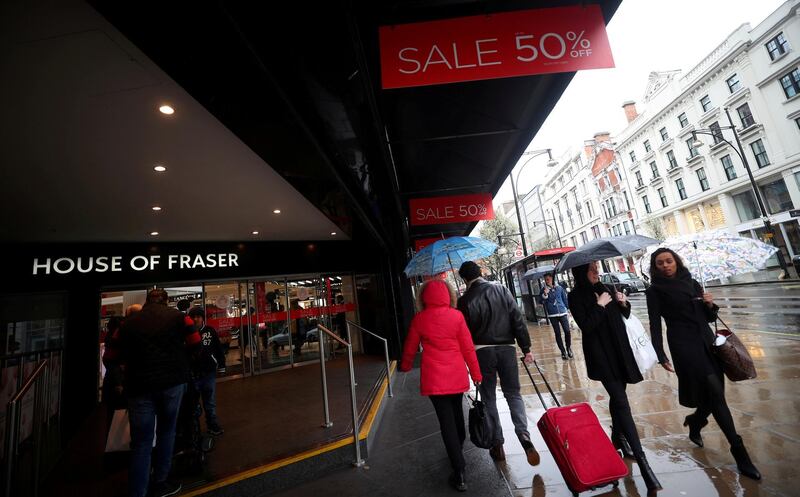Amazon.com is coming, and UK consumers aren't spending in town.
Life on the British high street is really tough, and all retailers would love to cut their rent bills.
So it's understandable that the recent slew of company voluntary arrangements would seem galling to well-managed chains. Department store House of Fraser is only the latest to embrace the Company Voluntary Arrangement (CVA) - New Look, Carpetright and restaurant chain Prezzo are among those that have already secured agreements with creditors, enabling them to cut their property costs.
But this legal procedure isn't a sure step to saving struggling brands.
CVAs give financially distressed companies relief from their obligations, as Louise Parker and Chris Chaviaras of Bloomberg Intelligence point out, particularly costly leases. Retailers and restaurant groups use them to shut some stores and get better deals on others.
It's not just that the arrangements come with a cost. While chains will want to shed unprofitable stores and hang on to the best ones, landlords don't have to oblige. Even if they do, companies that have cut rent bills through a CVA are more vulnerable to the whims of their leaseholders, which could include taking back a property and passing it on to another occupier.
So far, landlords have backed the CVAs. That may not last. The rash of restructurings comes as well-performing retailers have also been looking for ways to lower their property costs. Last year Next lowered rental payments on 19 stores by 25 per cent after it renegotiated terms when the leases came up for renewal. This year it is seeking reductions on 29 units. With more profitable groups also getting in on the game, landlords may no longer be so willing to help out the stragglers.
House of Fraser's proposed arrangement is worth watching here. It has an unusual twist - C.banner International Holdings, the owner of the famous Hamleys toy store, has dangled a capital injection by offering to buy 51 per cent of the company - provided creditors approve.
But the most serious risk with a CVA is that it gets mistaken as a cure for all of a struggling retailer's ills. It is not a substitute for giving customers what they want, at prices they are willing to pay and in stores they are happy to visit.
_______________
Read more:
UK high streets feel pinch as perfect storm gathers for retailers
UK grocer Sainsbury's to buy Walmart's Asda for £7bn
_______________
That's evident from the retailers that have struck agreements with creditors, only to go into administration not long after. Toys R Us UK and BHS are the most recent examples.
New Look seems to be getting it right. It has combined the CVA it agreed with creditors in March with moves to reinvigorate its ranges and refocus on its core customers. It has also drafted in executive chairman Alistair McGeorge, who revived the company five years ago, to lead the turnaround.
That all bodes well if New Look wants to issue debt in the future. So it makes sense that prices on its 2022 bond have recently stabilised.
House of Fraser should learn from New Looks' example. It hasn't disclosed which of its 59 outlets will close, but provincial department stores should surely be top of the list.
If creditors do agree to the restructuring - and there is no guarantee they will - the company needs to transform the remaining outlets into true luxury shopping experiences. That will require significant investment from C.banner on store renovations and e-commerce, as well as a fresher product selection.
Chief executive Alex Williamson will set out his strategic blueprint later this year, and that suggests he recognises that the CVA is only the beginning. Whether the company can make these plans work, and secure the necessary investment, is another matter.
Without making the 169-year-old department store relevant to today's shoppers, it risks joining the ranks of retailers for whom a CVA turned out to be the wrong medicine.
Bloomberg






